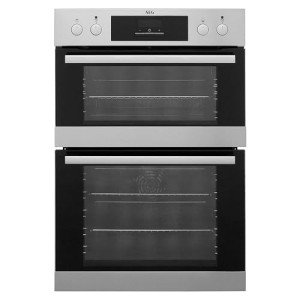The Rise of Built-In Ovens: A Seamless Approach to Modern Cooking
In contemporary kitchen areas, where design looks mix perfectly with functionality, one home appliance stands out as a real game changer: the built-in oven. As house owners and chefs alike continue to look for innovative options that enhance their cooking experience, built-in ovens have actually ended up being increasingly popular. This article explores the advantages, considerations, and trends surrounding built-in ovens, highlighting why they are a necessary function in contemporary cooking spaces.
What is ovens integrated -In Oven?
A built-in oven is a kitchen area device designed to be integrated into the cabinets of a kitchen area rather than standing alone. Unlike traditional freestanding ovens, which can be moved and positioned anywhere, built-in ovens can be found in various designs and sizes to fit specifically within designated spaces. Available in single or double setups, these ovens offer a structured appearance that matches contemporary cooking area designs.
Advantages of Built-In Ovens
1. Space-Saving Design
Among the most enticing advantages of built-in ovens is their space-saving style. By integrating the oven into kitchen cabinetry, you can maximize valuable counter and flooring space. This is particularly helpful in smaller cooking areas, where maximizing space is essential. Built-in ovens can be set up at eye level, making them more accessible and lowering the requirement to bend down.

2. Visual Appeal
Built-in ovens add to a streamlined and cohesive cooking area design. Offered in various finishes-- such as stainless steel, black, white, and custom cabinets-- they can blend effortlessly into the general design. This aesthetic appeal enhances the cooking area's visual harmony and raises the space, producing a contemporary and advanced environment.
3. Boosted Functionality
Many built-in ovens come geared up with innovative cooking technologies, such as convection cooking, steam ovens, and wise features. Built-in Oven enable for flexible cooking options, making it much easier to achieve professional-level outcomes in your home. Smart built-in ovens can even link to Wi-Fi, allowing users to manage the oven from another location, receive notifications, and gain access to a variety of cooking programs and recipes.
4. Enhanced Ventilation
Because built-in ovens can be integrated with kitchen area hoods and ventilation systems, they can help preserve much better air quality and decrease cooking smells. This is specifically significant for those who love to prepare with fragrant spices and components, as an efficient ventilation system can keep the cooking area comfy and welcoming.
5. Modification Options
Built-in ovens use a wide variety of personalization options to fit individual cooking styles and requirements. From professional-grade appliances with numerous cooking modes to compact styles for smaller sized cooking areas, house owners can choose the oven that fits their specific requirements. Many manufacturers also offer adjustable front panels, enabling you to match the oven's look to your kitchen cabinetry for a genuinely combined appearance.
Factors to consider When Choosing a Built-In Oven
While built-in ovens have lots of advantages, there are very important factors to consider to keep in mind before buying:
1. Rate
Built-in ovens typically include a higher rate tag than their freestanding counterparts due to their style and setup requirements. It's crucial to consider both the expense of the oven and any extra expenditures connected to kitchen cabinetry adjustments or setup.
2. Installation Requirements
Installing a built-in oven typically requires expert help, specifically if you need to modify existing cabinetry. Ensure that you think about any expenses associated with setup, including labor and prospective cabinets adjustments.
3. Size and Dimensions
Before purchasing a built-in oven, measure the designated space properly to make sure a correct fit. Built-in ovens been available in various sizes and setups, so choosing one that lines up with your needs and kitchen area design is crucial.
4. Way of life and Usage
Consider your cooking habits and requires when picking a built-in oven. If you often host big gatherings, a double oven may be more beneficial. On the other hand, if you have a compact cooking area, a single-wall oven might suffice.
Patterns in Built-In Ovens
The cooking area appliance market is continuously progressing, and built-in ovens are not exempt from emerging trends. Some existing trends include:
Smart Technology Integration: With the increase of clever home technology, built-in ovens now frequently feature connection options. This enables users to keep track of cooking development and adjust settings via mobile apps.
Energy Efficiency: As sustainability ends up being a top priority, many makers are buying energy-efficient built-in ovens that minimize energy usage while maintaining efficiency.
Multi-functional Designs: Built-in ovens now offer features such as air frying, sluggish cooking, and steaming, providing adaptability that meets a large range of cooking approaches.
Conclusion
Built-in ovens certainly represent a perfect mix of design, function, and benefit in today's kitchens. As more property owners select this contemporary service, the focus shifts to producing a cooking space that is as visually pleasing as it is practical. Whether you are developing a new home or redesigning your cooking area, considering a built-in oven might elevate your culinary experience and change your kitchen into a stylish and practical haven. With an array of options readily available and ongoing innovations in technology, built-in ovens remain a standout choice for both beginner cooks and culinary lovers alike.
